Themed collection Stimuli-responsive materials

Stimuli-responsive materials: a web themed collection
Feihe Huang, Xi Zhang and Ben Zhong Tang introduce this Materials Chemistry Frontiers themed collection on stimuli-responsive materials.

Mater. Chem. Front., 2019,3, 10-11
https://doi.org/10.1039/C8QM90057D
Recent progress in macrocyclic amphiphiles and macrocyclic host-based supra-amphiphiles
In this review, recent progress in macrocyclic amphiphiles and macrocyclic host-based supra-amphiphiles is discussed.
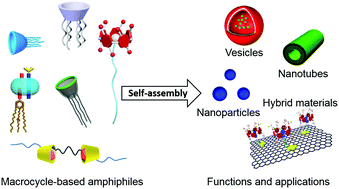
Mater. Chem. Front., 2018,2, 2152-2174
https://doi.org/10.1039/C8QM00314A
Photothermally driven liquid crystal polymer actuators
Light-controlled liquid crystal polymer actuators using the photothermal effect are easy to make and capable of executing complex shape morphing or motion.
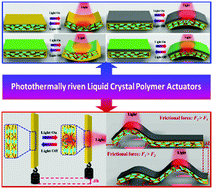
Mater. Chem. Front., 2018,2, 1932-1943
https://doi.org/10.1039/C8QM00363G
Hydrogels based on pH-responsive reversible carbon–nitrogen double-bond linkages for biomedical applications
This review outlines recent progress of pH-responsive hydrogels based on condensation reactions between nucleophiles and carbonyl groups for biomedical applications.
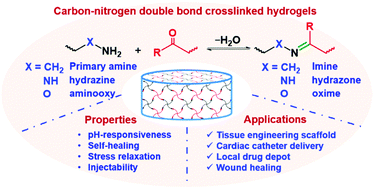
Mater. Chem. Front., 2018,2, 1765-1778
https://doi.org/10.1039/C8QM00317C
Hypersonic poration of supported lipid bilayers
Hypersound (ultrasound of gigahertz (GHz) frequency) has been recently introduced as a new type of membrane-disruption method for cells, vesicles and supported lipid bilayers (SLBs), with the potential to improve the efficiency of drug and gene delivery for biomedical applications.
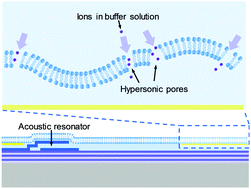
Mater. Chem. Front., 2019,3, 782-790
https://doi.org/10.1039/C8QM00589C
Protrusion of nanospikes on cholesterol-containing microgels by reduction-responsive self-assembly in cell milieu and its influence on cell functions
Protrusion of nanospikes observed in cell milieu on the surface of reduction-responsive microgels.
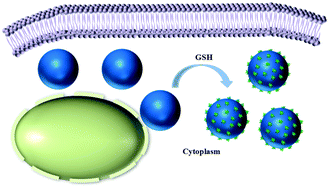
Mater. Chem. Front., 2019,3, 233-241
https://doi.org/10.1039/C8QM00345A
Highly degradable imine-doped mesoporous silica particles
Enhanced degradation of mesoporous silica particles in neutral and acidic aqueous solutions was achieved by embedding diimine moieties in the silica network.

Mater. Chem. Front., 2019,3, 111-119
https://doi.org/10.1039/C8QM00438B
Co-assembly of sugar-based amphiphilic block polymers to achieve nanoparticles with tunable morphology, size, surface charge, and acid-responsive behavior
Co-assembly of glucose-based polymers is demonstrated as a simple strategy to control nanoparticle morphology, size, surface charge, and acid-responsive properties.
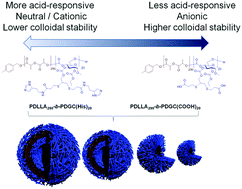
Mater. Chem. Front., 2018,2, 2230-2238
https://doi.org/10.1039/C8QM00353J
Gamma radiation-responsive side-chain tellurium-containing polymer for cancer therapy
Gamma radiation-responsive side-chain tellurium-containing polymers possess specific anticancer effect and less toxicity in the non-radiation region.
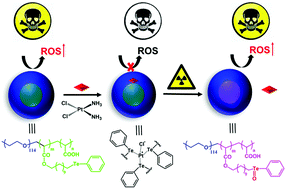
Mater. Chem. Front., 2018,2, 2109-2115
https://doi.org/10.1039/C8QM00321A
CO2-switchable response of protein microtubules: behaviour and mechanism
In this study, a new mechanism on CO2-responsiveness of protein microtubules constructed by dual non-covalent interactions has been demonstrated.

Mater. Chem. Front., 2018,2, 1642-1646
https://doi.org/10.1039/C8QM00245B
Pillararene-based host–guest recognition facilitated magnetic separation and enrichment of cell membrane proteins
A magnetic solid phase extraction strategy for the separation and enrichment of cell membrane proteins with convenience and reliability was constructed by means of pillararene-based host–guest recognition.

Mater. Chem. Front., 2018,2, 1475-1480
https://doi.org/10.1039/C8QM00141C
Janus quantum dot vesicles generated through membrane fusion
Janus vesicles containing different fluorescent quantum dots in two hemispheres are prepared through a membrane fusion method.
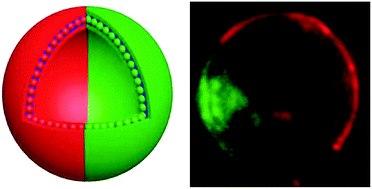
Mater. Chem. Front., 2018,2, 1040-1045
https://doi.org/10.1039/C8QM00059J
About this collection
Welcome to Materials Chemistry Frontiers themed collections on “Stimuli-responsive materials”!
This web theme, as a celebration of current achievements and future perspectives in the exciting and active research field of stimuli-responsive materials, will pay attention to the design and synthesis of novel building blocks, investigation of new stimuli-responsivenesses, development of new simulation and characterization methods, and exploration of novel applications. The stimuli-responsiveness endows these materials with the ability to realize fascinating functionalities including degradability, shape memory, controlled release and self-healing, and provides applications in various areas such as information storage, imaging, switchable catalysis, sensing, molecular electronics, drug delivery, gene transportation, cell culture, tissue regeneration, and smart/adaptive materials and devices. This web theme will cover stimuli-responsive materials prepared from molecules/macromolecules/polymers based on covalent bonds, supramolecular materials based on noncovalent bonds, inorganic materials, and organic/inorganic hybrid materials.
Guest Editors: Feihe Huang (Zhejiang University), Xi Zhang (Tsinghua University)
More articles will be added as soon as they are published.